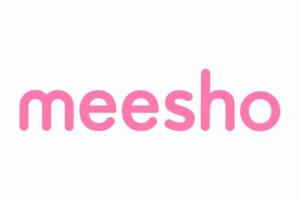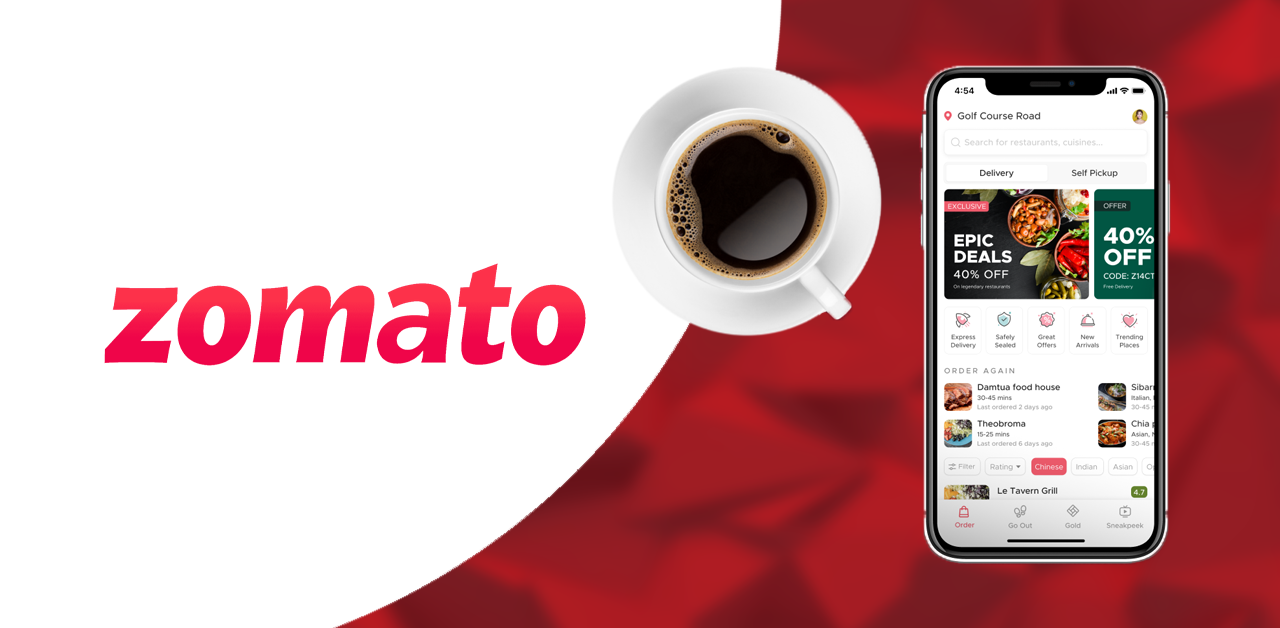Meesho is a social commerce platform in India. Vidit Aatrey and Sanjeev Barnwal are the founders of the company. Meesho helps small businesses and individuals start their business via online stores through various social media platforms like Instagram, WhatsApp, Facebook, etc. The article mentions the history, working, differentiator, business model, and distribution strategy of Meesho.
Meesho stands for ‘Meri E-Shop’ or ‘my online shop’. Meesho helps individuals to start a business with zero capital and investment. It also assists people in commencing their online businesses. The Meesho app is available on iOS and Android phones. For instance- Mr X is a T-shirt manufacturer. He registers an account with Meesho. To promote the products, the person can generate links and share them on various social media platforms. Also, if a customer buys a product- the company is responsible for all the logistical activities.
Today Meesho has more than 100k registered suppliers and 65M active customers. Moreover, it has 100M+ app downloads and operates in 4500+ cities in India. Several high-profile investors have invested in Meesho, now valued at $4.9 billion. It claims to have connected more than 13 million entrepreneurs.
Meesho helps sell fashion, apparel, and jewellery items, at a cheaper price than Amazon, Flipkart, etc. Over 70% of customers are from Tier II and III cities.

Background of Meesho
Earlier, the founders had a named start-up as ‘Fashnear’. It was a hyper-local shopping app where the buyers could select three items from a nearby fashion store, and the delivery person fulfills the order. The customer could pick any one of them or all, pay for it, and return the rest. However, the start-up closed due to two reasons.
Firstly, low-profit margins due to non-branded items and secondly, the founders could not fulfil the orders due to instant delivery demand. The founders of Meesho were trying to make a marketplace for fashion equivalent to the business model of Swiggy. They were trying to create something like what Grofers did with groceries or Zomato with food.
The founders understood that Fashnear’s business model was not feasible as online stores were more prominent and could offer discounts and services for the entire year. However, the offline stores were finding it difficult to cope with the end-of-season sale offers.
Later they met a local shop owner who used to post pictures of his products on WhatsApp, and the customers used to place orders. Afterwards, the worker used to deliver the product and collect cash. After their observation, they came up with a business model to help MSEs, especially women entrepreneurs, grow their business via social media platforms. Moreover, the company assists individuals and small businesses overcome hurdles such as logistics, online payments, etc.

Working of Meesho
In the business model of Meesho, there are three parties- sellers, resellers, and buyers. Sellers or suppliers list the products on Meesho after registration. Resellers help in pushing the products of suppliers. If a reseller comes across the product, they will share the images and links to various social media platforms. If anyone wishes to buy the product, they need to share their details with the reseller such as name, address, phone number, etc. Now, the reseller adds his profit margin and places the order for the product with the seller. Lastly, the seller packs the order, and Meesho delivers the product to the end-user with the help of their logistic partner.
For example, Mr Kohli lists ten coffee mugs on Meesho, ₹250 each. Mr Sharma, a reseller, shows resale interest in it and shares the coffee mugs’ pictures on his WhatsApp group and Instagram. He receives one order from a group member and another from Instagram. Then, he places an order for two mugs with Mr Kohli and adds the profit margin of ₹50 on each mug. Hence, the selling price is ₹300 each. Mr Kohli packs the order, and later the delivery partner of Meesho delivers the product to the ultimate customer.
Moreover, the resellers might charge a commission on the products sold to the producer or supplier of the product. Usually, the housewives or influencers are the resellers. They have the trust and loyalty of the potential buyers.
In addition, the company looks after all the logistical activities. Now, the app offers a catalogue of the listed products, which is easy to share on social media platforms. Moreover, Meesho provides capital, resources, and guidance to start an online business.
Social Commerce Market
Social Commerce is a part of e-commerce which makes use of social media platforms and digital media to initiate business activities. According to a report by Bain & Company, India’s social commerce sector will reach $60-70 billion by 2030. Moreover, the share of social commerce in the e-commerce space will grow at a CAGR of 65% between 2020-25.
75% of purchases are from a known entity which induces a trust factor among the customers, especially from tier II and III cities, who do not prefer online platforms due to complicated technology and fear of defective products. Additionally, resellers provide customized products that fit the tastes and preferences of the customers.
Social Commerce companies work on an asset-light model. They do not have any fixed costs, manpower, and dead inventory. Hence, the prices of products listed on social commerce platforms are way less than traditional e-commerce platforms, making it a good alternative for SMEs and the unorganized sector. Moreover, the acquisition cost is the lowest because existing social media platforms have a significant user base.
Since 2021, social commerce start-ups have raised $554 million. The segment has experienced a seven times increase in funding, the highest ever since 2015.

How is Meesho different from its peers?
Meesho was one of the first players in the social commerce space. However, many start-ups like Citymall, Glowroad, etc., have entered the segment. Shopsy, a Flipkart-backed application, provides a platform for local entrepreneurs to set up an online store. Shopsy works on a zero-commission business model, similar to Meesho. It helps in wider reach.
However, Meesho’s logistics network is the secret sauce to tackling heavy competition in the market. Meesho’s average value ranges between ₹400-500 because the target audience is tier II and II cities which usually place cheaper orders. Hence, Meesho deals with high volume orders daily, offering high utilization to its logistics customers. It ultimately reduces logistics costs and saves time. Such a unique proposition is challenging for the competitors to crack within a short span.

Business Model of Meesho
Earlier, Meesho used to charge 10-20% commission from sellers. However, in 2021, it became the first e-commerce company to offer zero per cent commission. It encouraged sellers to invest in capital rather than paying hefty commissions. The move raised 25% of sellers and producers joining the platform. Hence, the current source of income for Meesho is via ads and rank push. Similar to Flipkart, Meesho allows sellers to run ads to market their products for a better reach on the app itself. However, they charge the supplier only if a customer clicks on the ad.
Meesho has a large number of sellers which is increasing daily. It ultimately increases their revenue. Moreover, it helps to bring more traffic and visibility via SEO optimization. It is another source of income for Meesho.
Moreover, Meesho holds a good amount of user data which it may sell to partner companies, who use it for understanding the customer needs helping the businesses to flourish. However, Meesho claims to keep the sensitive data of its users safe.
Lastly, Meesho has partnered with logistics companies for delivery fulfilment. After the delivery, Meesho earns a part of the delivery charges and passes the rest to the logistics partner.

Meesho’s Distribution Strategy
Meesho started with fashion and apparel and targeted housewives, who were running small businesses or reselling via WhatsApp and Facebook. Moreover, it also brought influencers on board to market their app to a dedicated audience. Once it achieved the product-market fit, it started advertising its app and features via TV and digital platforms. It also partnered with beauty and lifestyle influencers on YouTube. They displayed their products and showed the ease of using the Meesho app for reselling those products. It helped the company to promote its products and have 200+ categories.
The majority of the sellers and buyers are women. Hence, Meesho’s focus is on women’s empowerment and helping them achieve financial freedom.
For instance, to celebrate women’s entrepreneurship, Meesho launched an ad campaign giving a woman her identity. It focuses on the unstoppable energy of women who defeats all the social and economic barriers and proves that she is not just a homemaker but also a Meesho entrepreneur. In the ad, the homemaker is a wife, mother, daughter-in-law, madam, etc. However, the ad takes a delightful turn when her husband calls her an entrepreneur after ₹500 gets credited to her account via Meesho.





